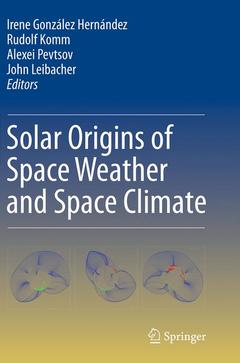Description
Solar Origins of Space Weather and Space Climate, 2014
Coordinators: González Hernández Irene, Komm Rudolf, Pevtsov Alexei, Leibacher John
Language: English
Subjects for Solar Origins of Space Weather and Space Climate:
Publication date: 09-2016
Support: Print on demand
Publication date: 06-2014
254 p. · 15.5x23.5 cm · Hardback
Description
/li>Contents
/li>Biography
/li>Comment
/li>
Presents an overview of recent research on the original of solar phenomena that affect Earth?s technological systems.
This topical issue is based on the presentations given at the 26th National Solar Observatory (NSO) Summer Workshop held at the National Solar Observatory/Sacramento Peak, New Mexico, USA from 30 April to 4 May 2012. This unique forum brought together experts in different areas of solar and space physics to help in developing a full picture of the origin of solar phenomena that affect Earth?s technological systems. The articles include theory, model and observation research on the origin of the solar activity and its cycle, as well as a discussion on how to incorporate the research into space-weather forecasting tools.
This volume is aimed at graduate students and researchers active in solar physics and space science.
Previously published in Solar Physics, Vol. 289/2, 2014.
Dr. Irene González Hernández was an astronomer at the National Solar Observatory. Her research interests included helioseismology, far side images and ring-diagram analysis.
Dr. Rudolf Komm is a Research Scientist at the National Solar Observatory and a leading expert in helioseismology, dynamics of the solar convection zone and the solar activity cycle.
Dr. Alexei Pevtsov is an astronomer at the National Solar Observatory. His research interests include solar magnetic fields and helicity, sunspots, the corona, CMEs and space weather.
Dr. John Leibacher is an astronomer at the National Solar Observatory and one of the Editors-in-Chief of the journal Solar Physics. His research interests include all aspects of helioseismology and atmospheric dynamics.
Presents an overview of recent research on the original of solar phenomena that affect Earth’s technological systems
Includes articles on how to incorporate the research into space-weather forecasting tools




